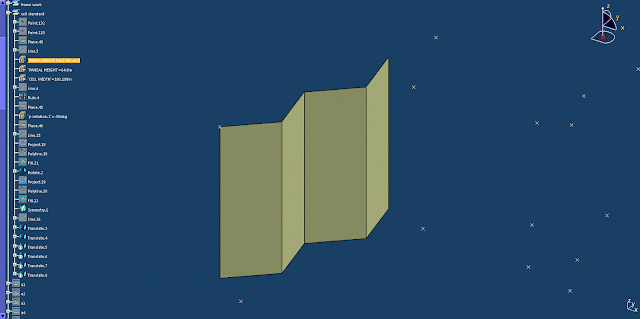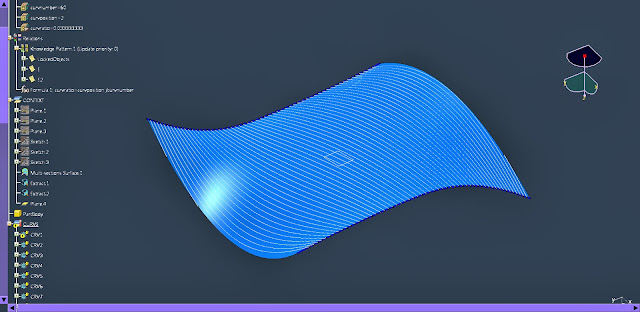Final Project
In this final project I used design tables to drive the different layers of variations of this changeable shading facade.
In the framework level, a few parameters of the dimensions of the facade are applied to allow manipulation of the general geometry of the framework.
Then a system of horizontal and vertical plans are made intersections of the facade surface to achieve the grids of the framework.The horizontal plans are evenly rising in height and are located all on this main 'axis' which is also driving the vertical cutting plans. The vertical cutting plans are mean through both the 'axis' and the evenly distributed points on the top and bottom profiles of the facade.
Then the every cell of the aperture on the facade is located within every neighboring four points on the grids of the framework. And the shading system consist of several folding panels. Both the size of the panels and the number of the panels within the cell are embedded with parametric design method.
The height and width of the panel are driven by local parameters which are collected with two design tables in which random numbers are applied to simulate the random situations of shading and opening.
Another parameter is the rotation of the panel which can mimic the way the panels slide over along the cell's side.
The numbers of panels in each cell are determined by a written rules which controls the true and false activities of each panel. Dividing the total width of the cell with the width of the panel, and then taking an approximate natural number of the quotient,the number of the panels are decided. Panels are labeled in numbers, any one with the number bigger than the approximate quotient are deactivated within that cell.
Since the rule and parameters of the size and rotation of the panels are locally embedded in the a power copy unit, repeating the copy of the unit creates a series of parameters independent with each other and those parameters can be applied with random numbers in design tables to simulate the random situations of the apertures on the facade.
Variations of the Aperture in panels' size



















































